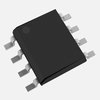-
A good PCB layout for the LTC1992-10HMS8#PBF involves keeping the input and output traces short and away from noise sources, using a solid ground plane, and placing decoupling capacitors close to the device. A 4-layer PCB with a dedicated power plane and a dedicated ground plane is recommended.
-
To ensure accurate temperature measurement, make sure to follow proper thermal design practices, such as placing the device close to the thermal source, using a thermally conductive material, and minimizing thermal gradients. Also, calibrate the device according to the datasheet recommendations.
-
The maximum allowed voltage on the VCC pin is 5.5V. Exceeding this voltage may damage the device. It's recommended to use a voltage regulator or a voltage limiter to ensure the voltage stays within the recommended range.
-
The LTC1992-10HMS8#PBF is rated for operation up to 125°C. However, the accuracy and reliability of the device may degrade at high temperatures. It's recommended to consult the datasheet and application notes for guidance on using the device in high-temperature environments.
-
To troubleshoot issues with the LTC1992-10HMS8#PBF, start by checking the power supply voltage, ensuring that it's within the recommended range. Then, verify that the input and output connections are correct and that the device is properly configured. Use an oscilloscope to check the output waveform and verify that it's within the expected range. Consult the datasheet and application notes for more detailed troubleshooting guidance.
 LTC1992-10HMS8#PBF datasheet
by Linear Technology
LTC1992-10HMS8#PBF datasheet
by Linear Technology
